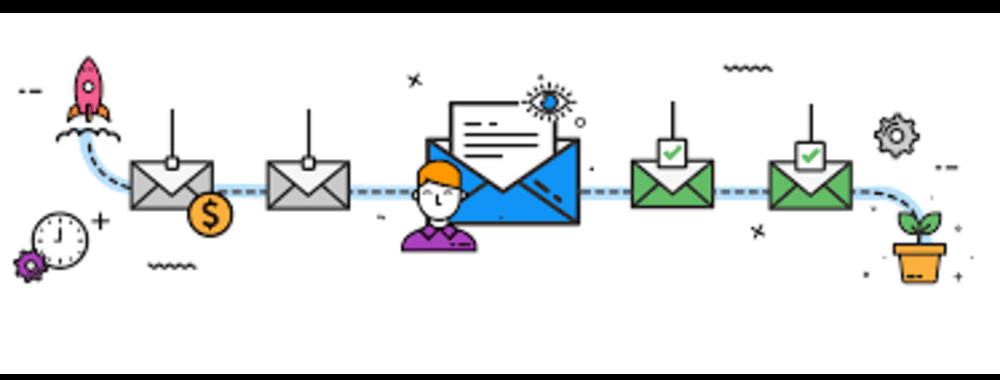If you’ve ever signed up for a newsletter and then received a series of well-timed, relevant emails afterward, you’ve experienced a drip campaign. These automated email sequences are one of the most effective ways to engage leads, build trust, and convert prospects into loyal customers.
Whether you’re a small business owner, a digital marketer, or just diving into email automation, this guide will walk you through the basics of drip campaigns and how to use them strategically to nurture your leads like a pro.
What Is a Drip Campaign?
A drip campaign is a series of pre-written emails automatically sent to subscribers over a set period. Each email is designed to move the lead further down the sales funnel, offering value, answering questions, and guiding them toward a desired action — whether that’s making.
Think of it like planting seeds and watering them regularly. You’re not bombarding your audience with messages — you’re nurturing them over time.
Why Drip Campaigns Work
Drip campaigns are powerful because they’re:
Automated – Set them up once and let them work in the background.
Targeted – Tailored to specific actions or behaviors of users.
Timely – Messages go out at the right time, increasing engagement.
Personalized – Built around the user journey, not just a sales pitch.
According to a study by Emma, relevant, targeted emails produce 18 times more revenue than global broadcasts. That’s a serious return on investment.
Key Elements of a Successful Drip Campaign
1. Clear Objective
Every campaign should have a goal: onboarding a user, converting a trial user, recovering an abandoned cart, or educating leads about a product or service. Knowing the goal helps you shape the content and timeline.
2. Audience Segmentation
Segment your list based on behaviors, demographics, or past interactions. A new subscriber shouldn’t get the same emails as a returning customer.
Examples of segmentation:
New subscribers
Trial users
Leads who downloaded an ebook
Customers who haven’t purchased in 60 days
3. Engaging Content
Each email should offer value — whether it’s tips, case studies, resources, or special offers. Use compelling subject lines and concise copy that drives the reader to take the next step.
4. Strategic Timing
Don’t send all your emails at once. Space them out to give the recipient time to digest the information. A common pattern is:
Day 1: Welcome email
Day 3: Introduction to product or service
Day 6: Share customer success story
Day 10: Address objections or FAQs
Day 14: Special offer or CTA
5. Strong Call-to-Action (CTA)
“Download the guide”
“Schedule a free demo”
“Get 10% off your first order”
Types of Drip Campaigns
There are various types of drip campaigns, and choosing the right one depends on where the lead is in the funnel.
1. Welcome Series
First impressions matter. Keep it friendly, informative, and light on the sales pitch.
2. Lead Nurturing Campaign
Perfect for warming up cold leads or those still researching.
3. Onboarding Drip
If you have a SaaS product or service, onboarding campaigns can help new users get the most out of their trial or first experience.
4. Cart Abandonment Campaign
5. Re-engagement Campaign
Inactive subscribers? Win them back with a re-engagement sequence that includes updates, exclusive offers, or even a simple “miss you” message.
Best Practices for Drip Campaign Success
✅ Write for Humans
Avoid sounding robotic. Use a conversational tone that reflects your brand personality.
✅ A/B Test Your Emails
✅ Monitor Analytics
Pay attention to open rates, click-through rates, and conversion metrics. These insights can help you tweak your campaign for better results.
✅ Keep It Mobile-Friendly
Make sure your layout and CTA buttons are optimized for smaller screens.
✅ Don’t Overdo It
Too many emails too fast can lead to unsubscribes. Respect your audience’s inbox.
Tools to Create Drip Campaigns
You don’t have to do everything manually. There are plenty of platforms that make creating and managing drip campaigns easy:
Mailchimp – Great for beginners with drag-and-drop email builders.
Active Campaign – Offers advanced automation and CRM integration.
Convert Kit – Perfect for creators and bloggers.
Hub Spot – Ideal for larger businesses with complex sales funnels.
Mailer Lite – Affordable with solid features for small businesses.
Final Thoughts
Drip campaigns are like having a virtual salesperson working 24/7, building relationships with your leads and guiding them toward action. When executed well, they can significantly boost your conversions, reduce churn, and enhance customer loyalty.
By focusing on relevance, timing, and value, you’ll nurture your leads like a pro — and watch your business grow as a result.
Ready to Build Your First Drip Campaign?
Start small. Choose one goal and one audience segment. Map out 3–5 emails, set your timing, and launch. You’ll learn and improve with each campaign.
Need help crafting the perfect email sequence? Get in touch with us — we specialize in building high-converting campaigns tailored to your audience and goals.
